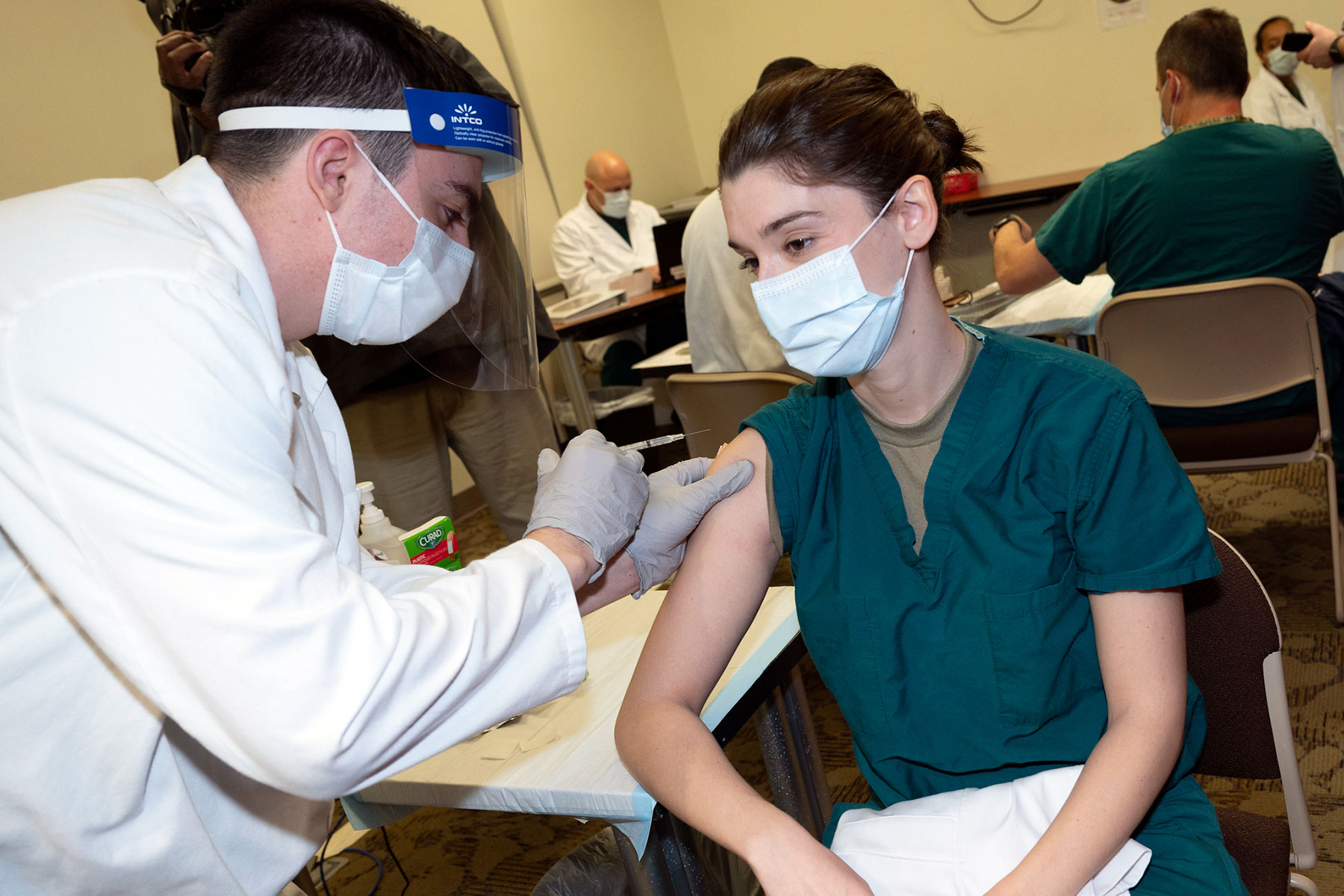Following is a summary of vaccine distribution and some facts I would like to share with all of you to better assist your decision making.
What is a Virus?
A virus is a small collection of genetic code, either DNA or RNA, surrounded by a protein coat. A virus cannot replicate alone. Viruses must infect cells and use components of the host cell to make copies of themselves. Often, they kill the host cell in the process, and cause damage to the host organism. Viruses have been found everywhere on Earth. Researchers estimate that viruses outnumber bacteria by 10 to 1. For many years’ viruses were not considered to be a living thing, the definition in recent years has changed based on the viruses’ life cycle.
What is COVID-19?
COVID-19 is the name of the disease caused by the SARS-CoV2 virus. Viruses and the diseases they cause have different names. For example, AIDS is the disease caused by the human immunodeficiency virus, HIV. The COVID-19 Virus is a “novel virus.”
As mentioned above, COVID-19 is an acronym. In its full form, COVID-19 stands for coronavirus disease of 2019; the “CO” stands for Corona, the “VI” Virus and the “D” Disease. The virus was discovered in Wuhan, China in the year 2019.
A “novel” coronavirus means that it is a new coronavirus that has not been previously identified in humans. This means it is different from coronaviruses that cause the common cold, and those that caused SARS in 2002 and MERS in 2012.
Like, SARS and MERS, the novel coronavirus is a zoonotic disease. The definition of a zoonotic disease is one that begins in animals and is transmitted from animals to people.
How Does Covid-19 Spread?
You can become infected by coming into close contact (about 6 feet or two arm lengths) with a person who has COVID-19. COVID-19 is primarily spread from person to person. You can become infected from respiratory droplets when an infected person coughs, sneezes, or talks.
Types of Vaccines:
Vaccines come in three forms: Live (which is a weakened virus and sometimes referred to as attenuated); inactivated (which is often a killed virus), and genetically engineered vaccines; this type of vaccine uses genetically engineered RNA or DNA that has instructions for making copies of the viruses’ surface protein. These copies prompt an immune response to the virus. With this approach, no infectious virus needs to be handled. The COVID-19 is a genetically engineered vaccine.
What is in the COVID-19 Vaccine?
Both Pfizer and Moderna’s vaccines use bits of genetic code to cause an immune response and is called an mRNA vaccine. It does not alter human cells, but merely presents the body with instructions to build immunity to Covid. The mRNA basically codes for a protein that triggers an immune response in your body – it tricks your body into thinking it is being invaded by a foreign substance that may cause harm. Your immune system are your personal soldiers, they are there to protect you … and they have memory, once they recognize an invader, they will remember the specific invader and if invaded at a later date the immune soldiers will launch a specific response against the same invader.
Will the COVID-19 Vaccine Make Me Ill?
There is no evidence that any of these ingredients cause harm when used in such small amounts. Vaccines do not give you a disease. Instead, they teach your body’s immune system to recognize and fight the infection they have been designed to protect against.
Some people do suffer mild symptoms after being vaccinated, such as muscle aches or a temperature. This is not the disease itself, but the body’s response to the vaccine.
Is it safe for someone who had COVID to have the vaccine?
People will still be offered the vaccine even if they have had Covid-19 in the past. That’s because natural immunity may not be long-lived, and immunization could offer more protection. However, if you are currently ill with a confirmed case of COVID-19 please consult your physician before being vaccinated.
Who will be Vaccinated First?
Vaccine dissemination is divided into four phases – Phase 1 is divided into parts a and b. The vaccine population identified in each part is as follows: Phase 1a is slated for healthcare workers and elders living in long term facilities and assisted living facilities. Elder living in their own homes or with a family member are not eligible to receive the vaccine during Phase 1a – only those that reside in long term care or assisted living facilities.
- Phase 1b is for police officers, congregate setting staff in jails and detention centers, teachers and other essential workers.
- Phase 2 is for the elderly and those with chronic disease and are considered to be at higher risk; Phase 3 is for wider distribution to the general population and the last phase, phase 4, is routine vaccination county wide.
Where are we now?
The Tribal Health Department received 40 Pfizer vaccines and vaccinated all frontline healthcare workers; this week we are receiving 100 doses of the Moderna vaccine and will be vaccinating police officers, detention center staff, teachers and staff in social services.
We anticipate additional vaccine shipments in the coming weeks and will be reaching out to Elders 65 years and older to schedule a vaccination clinic. The vaccine is being shipped in small allotments; we are working hard to ensure all Southern Ute tribal members are vaccinated in a timely manner.




